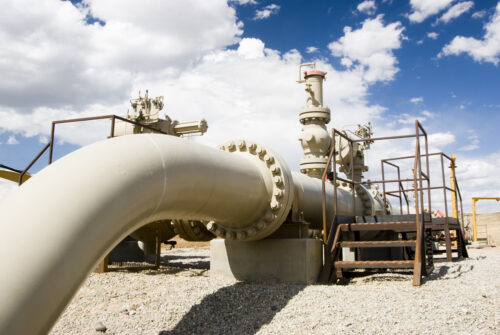Rising Gas Imports and the UK’s Balance of Trade
How gas boilers and power plants will pass thousands of pounds per household to overseas companies and governments.
Last updated:
Executive summary
The ongoing rapid decline in North Sea gas production, as forecast by the fossil fuel industry, coupled with slow-paced policies to cut gas demand, threatens the UK’s hopes of energy independence, with gas import dependence potentially growing by 60% by 2035.
This rising gas import dependence (as analysed in our previous report) will have major financial implications, including a profound negative impact on the UK's balance of trade and household finances.
With wholesale gas prices potentially sitting at three times their pre-crisis levels for several years, current policies could leave the UK’s annual wholesale gas bill above £35bn most of the way to 2035, at least three times the pre-crisis level.
The vast majority of these costs would be paid to overseas gas producers, approaching £30bn a year from 2030 and accounting for 85% of UK gas payments by 2035, taking this transfer of funds to over four times its pre-crisis level.
A typical UK household with a gas boiler would be paying £500 a year to overseas gas producers by 2035, five times the level before the gas crisis – roughly £200 to Norway, and £300 to Qatar and other LNG exporters. However, a 'net zero home' with an electric heat pump, better insulation and solar PV panels would be spending less than £100 on imported gas in 2035.
Between 2024 and 2035, a household using typical amounts of gas would have paid £5,700 to overseas gas producers. A net zero home would have paid just a quarter of that cost, £1,400.
By contrast, a more ambitious set of policies to deploy insulation, heat pumps, and British renewables would reduce gas demand for heating and power generation, potentially cutting UK gas imports by 55% by 2035.
This approach of cutting gas demand to cut gas imports and so improve energy security would reduce our spending on wholesale gas, including payments to overseas producers. Overall UK spending on gas would return to pre-crisis levels by 2035 – albeit for less gas at a higher price.
Under this scenario of cutting gas demand for energy security, most homes would become 'net zero homes’, with heat pumps, upgraded insulation and solar panels. Each of these net zero homes would use just £10 of gas in 2035, with only £1 of that going to Qatar.
However, the UK risks missing the opportunity to change course towards lower gas demand, as the Government is not seeking to keep pace in the global race to attract net zero investment. This poses the very real risk that the UK remains locked into unnecessarily high gas imports, as North Sea gas output unavoidably declines.
